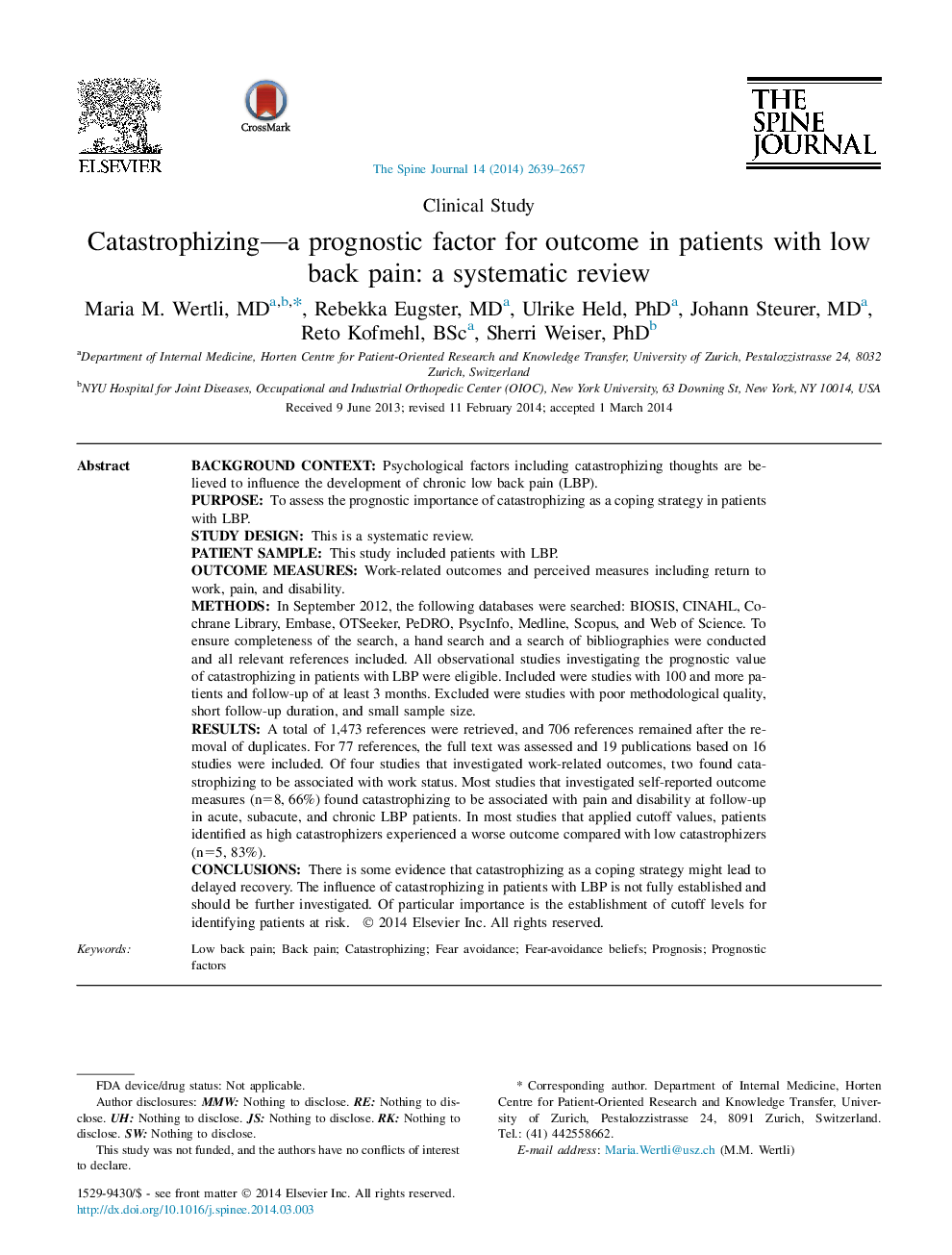| Article ID | Journal | Published Year | Pages | File Type |
|---|---|---|---|---|
| 6212717 | The Spine Journal | 2014 | 19 Pages |
Background contextPsychological factors including catastrophizing thoughts are believed to influence the development of chronic low back pain (LBP).PurposeTo assess the prognostic importance of catastrophizing as a coping strategy in patients with LBP.Study designThis is a systematic review.Patient sampleThis study included patients with LBP.Outcome measuresWork-related outcomes and perceived measures including return to work, pain, and disability.MethodsIn September 2012, the following databases were searched: BIOSIS, CINAHL, Cochrane Library, Embase, OTSeeker, PeDRO, PsycInfo, Medline, Scopus, and Web of Science. To ensure completeness of the search, a hand search and a search of bibliographies were conducted and all relevant references included. All observational studies investigating the prognostic value of catastrophizing in patients with LBP were eligible. Included were studies with 100 and more patients and follow-up of at least 3 months. Excluded were studies with poor methodological quality, short follow-up duration, and small sample size.ResultsA total of 1,473 references were retrieved, and 706 references remained after the removal of duplicates. For 77 references, the full text was assessed and 19 publications based on 16 studies were included. Of four studies that investigated work-related outcomes, two found catastrophizing to be associated with work status. Most studies that investigated self-reported outcome measures (n=8, 66%) found catastrophizing to be associated with pain and disability at follow-up in acute, subacute, and chronic LBP patients. In most studies that applied cutoff values, patients identified as high catastrophizers experienced a worse outcome compared with low catastrophizers (n=5, 83%).ConclusionsThere is some evidence that catastrophizing as a coping strategy might lead to delayed recovery. The influence of catastrophizing in patients with LBP is not fully established and should be further investigated. Of particular importance is the establishment of cutoff levels for identifying patients at risk.
